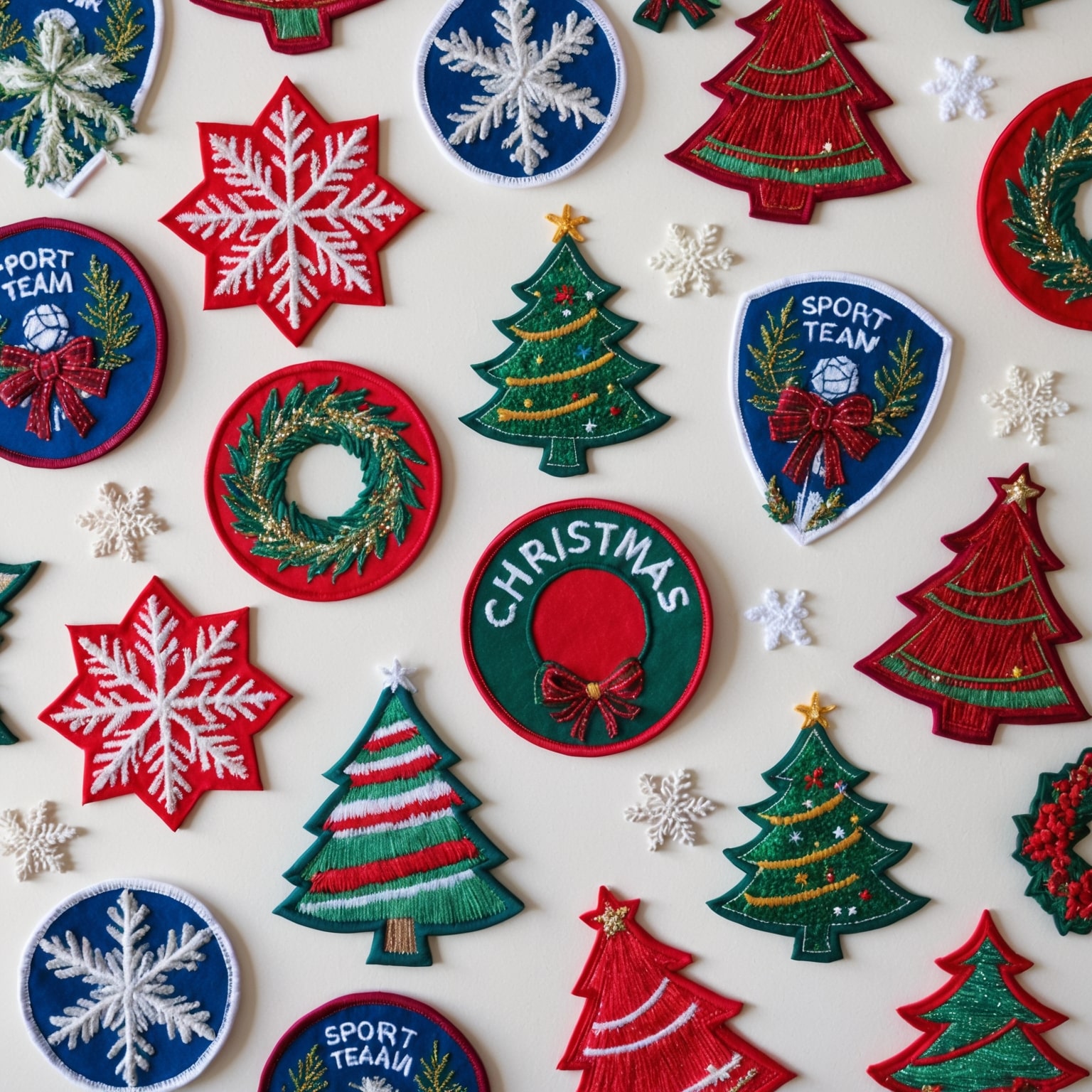School patches have long been a symbol of pride, achievement, and belonging within educational institutions. These small yet significant pieces of fabric carry with them a rich history and deep meaning, representing the identity and values of the schools, teams, and students who wear them. From varsity letters and club patches to commemorative designs, school patches serve as a tangible connection to the traditions, accomplishments, and heritage of the academic community.
Designing meaningful school patches is an art form that requires careful consideration of symbolism, colors, and materials. When done thoughtfully, these patches become more than just decorative items; they become cherished keepsakes that embody the spirit and legacy of the school. In this comprehensive article, we will explore the art of designing patches, discuss the elements that contribute to their significance, and provide strategies for creating patches that resonate with students, alumni, and the broader school community.
1. The Historical Significance of School Patches
1.1. Origins of School Patches
School patches have a long history that dates back to the early 20th century when they first became popular in American high schools and colleges. Originally, these patches were worn by athletes to signify their membership on a varsity team, but over time, their use expanded to include various student organizations and academic achievements.
- Varsity Letters: The varsity letter, one of the earliest forms of patches, was awarded to students who excelled in sports. These letters were often displayed on letterman jackets, a tradition that continues to this day. The varsity letter quickly became a symbol of athletic prowess and school spirit.
- Club and Organization Patches: As school patches grew in popularity, they began to be used by a wider range of student groups, including academic clubs, honor societies, and extracurricular organizations. Each patch was designed to reflect the identity and mission of the group it represented.
- Commemorative Patches: Schools also began creating commemorative patches to mark special events, anniversaries, and milestones. These patches served as a way to celebrate the school’s history and honor its legacy.
1.2. The Role of School Patches in Building School Identity
School patches play a vital role in building and reinforcing the identity of an educational institution. They serve as visual representations of the school’s values, traditions, and achievements, fostering a sense of pride and belonging among students and alumni.
- Symbol of Belonging: Wearing a school patch signifies membership in a specific group or community within the school. Whether it’s a sports team, academic club, or honor society, the patch serves as a symbol of belonging and unity.
- Expression of School Spirit: School patches are a powerful expression of school spirit. When students wear patches that represent their school’s colors, mascot, or motto, they are proudly displaying their connection to the institution and their commitment to its values.
- Legacy and Tradition: Custom school patches are often tied to longstanding traditions within the school. By wearing these patches, students and alumni are participating in a tradition that has been passed down through generations, helping to preserve the school’s legacy.
1.3. The Evolution of School Patch Design
The design of school patches has evolved over the years, with advances in technology and changes in fashion influencing their appearance. Today, school patches can be highly customized, offering endless possibilities for creative and meaningful designs.
- Traditional vs. Modern Designs: While traditional school patches often featured simple designs with a focus on the school’s initials or mascot, modern patches can incorporate a wide range of elements, including detailed graphics, complex color schemes, and unique shapes.
- Customization and Personalization: Modern school patches can be personalized to reflect the specific achievements or roles of individual students. For example, a patch for a varsity athlete might include the student’s name, jersey number, or position on the team.
- Innovative Materials and Techniques: Advances in embroidery and patch manufacturing have allowed for the use of new materials and techniques, such as 3D embroidery, glow-in-the-dark threads, and heat-activated adhesives. These innovations have expanded the possibilities for creative and impactful school patch designs.
2. Designing Meaningful School Patches
2.1. Understanding the Symbolism Behind School Patches
The symbolism behind custom patches is a key element in their design. Each patch should reflect the values, mission, and identity of the school or group it represents.
- School Mascots and Logos: The school mascot is often a central element in the design of school patches. Whether it’s a fierce animal, a mythical creature, or a historic figure, the mascot represents the spirit and character of the school. Incorporating the mascot into the patch design helps reinforce the school’s identity and build a sense of unity among students.
- Academic and Athletic Symbols: Patches that represent academic achievements or athletic accomplishments often feature symbols related to the specific subject or sport. For example, a patch for the debate team might include an image of a gavel or podium, while a patch for the soccer team could feature a soccer ball or goalpost.
- Cultural and Historical References: School patches can also incorporate cultural or historical references that are significant to the school or its community. This might include symbols related to the school’s founding, local landmarks, or important events in the school’s history.
2.2. Choosing Colors and Materials
The choice of colors and materials is a crucial aspect of school patch design. These elements not only affect the patch’s appearance but also contribute to its symbolism and durability.
- School Colors: The use of school colors in the patch design helps create a strong visual connection to the institution. These colors should be used consistently across all school patches to reinforce the school’s brand and identity.
- Material Selection: The materials used in the patch can vary depending on the desired look and feel. Common materials include felt, twill, and chenille, each of which offers different textures and levels of durability. The choice of material should align with the intended use of the patch, whether it’s for a jacket, uniform, or bag.
- Thread and Embroidery Options: The type of thread and embroidery technique used in the patch design can greatly impact its appearance. For example, metallic threads can add a touch of elegance, while thick chenille embroidery creates a bold, textured look. The choice of thread should complement the overall design and enhance the patch’s visual appeal.
2.3. Incorporating Personalization and Customization
Personalization and customization are key to creating meaningful school patches that resonate with individual students and groups.
- Names and Initials: Including the student’s name or initials on the patch adds a personal touch that makes the patch a unique keepsake. This is especially common in varsity letters or patches that recognize individual achievements.
- Year and Graduation Dates: Adding the year or graduation date to the patch helps commemorate the student’s time at the school and serves as a lasting reminder of their accomplishments. This is often done for senior class patches or commemorative designs.
- Custom Shapes and Sizes: While traditional patches are often circular or rectangular, custom shapes and sizes can add an extra level of creativity to the design. For example, a patch shaped like the school’s mascot or a specific object related to the club or team can make the patch stand out.
3. The Process of Creating School Patches
3.1. Collaborating with Stakeholders
The process of creating school patches typically involves collaboration between various stakeholders, including students, faculty, and designers. This ensures that the final product reflects the values and identity of the school community.
- Student Input: Involving students in the design process helps ensure that the patches resonate with those who will be wearing them. Students can provide input on the design, colors, and symbols that are most meaningful to them, resulting in a patch that reflects their experiences and achievements.
- Faculty and Administration: Faculty and administration play a key role in guiding the design process and ensuring that the patches align with the school’s mission and branding. They can provide valuable feedback on the design and help facilitate communication between students and designers.
- Professional Designers: Working with professional designers who specialize in school patches can help bring the vision to life. These designers have the expertise to create detailed, high-quality patches that meet the school’s specifications and standards.
3.2. Designing and Approving the Patch
Once the initial ideas and concepts have been gathered, the design process begins. This involves creating sketches, selecting materials, and refining the design until it meets the desired specifications.
- Sketching and Concept Development: The first step in the design process is to create sketches or digital renderings of the patch. This allows stakeholders to visualize the design and make any necessary adjustments before the patch is produced.
- Material and Color Selection: After the design has been finalized, the next step is to select the materials and colors that will be used in the patch. This includes choosing the base fabric, thread colors, and any additional elements such as chenille or metallic accents.
- Approval Process: Before the patch goes into production, it must be approved by the relevant stakeholders, including students, faculty, and administration. This ensures that everyone is satisfied with the final design and that it accurately represents the school’s identity and values.
3.3. Manufacturing and Quality Control
The manufacturing process is critical to ensuring that the final patches are of high quality and meet the school’s standards.
- Embroidery and Production: The patch is produced using specialized embroidery machines that stitch the design onto the chosen fabric. The embroidery process can vary depending on the complexity of the design and the materials used, with some patches requiring multiple layers of stitching or different embroidery techniques.
- Quality Control: After production, each patch undergoes a quality control inspection to ensure that it meets the desired standards. This includes checking for consistency in the embroidery, accuracy in the colors and design, and durability of the materials.
- Distribution: Once the patches have passed quality control, they are ready for distribution. This may involve attaching the patches to uniforms or jackets, packaging them for individual distribution, or presenting them at a special ceremony or event.
4. The Cultural and Emotional Impact of School Patches
4.1. Building School Pride and Unity
School patches play a significant role in building pride and unity within the school community. When students wear these patches, they are not just displaying a symbol; they are expressing their commitment to the school’s values and their connection to their peers.
- Fostering Team Spirit: For athletic teams, school patches are a powerful symbol of team spirit and dedication. Wearing a varsity letter or team patch represents the hard work, perseverance, and camaraderie that define the team’s success.
- Encouraging Academic Excellence: Academic patches, such as those awarded for honor roll, academic clubs, or special projects, serve as a visual reminder of the importance of academic achievement. These patches motivate students to strive for excellence and take pride in their academic accomplishments.
- Promoting Inclusivity: School patches can also promote inclusivity by recognizing a wide range of achievements and contributions. By offering patches for different clubs, organizations, and activities, schools can celebrate the diverse talents and interests of their students.
4.2. Creating Lasting Memories
School patches are more than just decorations; they are tangible reminders of the experiences, friendships, and milestones that define a student’s time at school. These patches often become cherished keepsakes that are kept long after graduation.
- Commemorating Achievements: Each school patch represents a specific achievement or moment in a student’s life. Whether it’s earning a varsity letter, being part of a championship team, or participating in a memorable event, the patch serves as a keepsake that commemorates these accomplishments.
- Connecting Generations: School patches also serve as a connection between generations of students. Alumni may keep their patches as a reminder of their time at school, and these patches can be passed down to future generations as a symbol of the family’s legacy at the institution.
- Celebrating Milestones: Commemorative patches that mark significant milestones, such as graduation, anniversaries, or special events, become part of the school’s history. These patches serve as a reminder of the school’s legacy and the role each student played in shaping that legacy.
4.3. Enhancing Alumni Engagement
For alumni, school patches are a powerful way to stay connected to their alma mater. These patches often evoke a sense of nostalgia and pride, encouraging alumni to remain engaged with the school community.
- Alumni Reunions: School patches can be distributed at alumni reunions or events as a way to celebrate the shared experiences of former students. These patches serve as a reminder of the bonds formed during their time at school and help strengthen alumni connections.
- Fundraising and Merchandise: Custom school patches can also be used as part of fundraising efforts, with proceeds going toward scholarships, school improvements, or other initiatives. Alumni may purchase these patches as a way to support their alma mater and stay connected to the school’s mission.
- Legacy Projects: Some schools create legacy projects that involve alumni in the design and distribution of commemorative patches. These projects not only honor the school’s history but also engage alumni in preserving and celebrating the school’s heritage.
The Art of Designing Meaningful School Patches
School patches are more than just pieces of fabric; they are symbols of pride, identity, and heritage. The art of designing meaningful school patches involves careful consideration of symbolism, colors, materials, and personalization. When done thoughtfully, these patches become cherished keepsakes that celebrate the achievements and experiences of students, alumni, and the broader school community.
By incorporating elements that reflect the school’s values, traditions, and identity, designers can create patches that resonate with those who wear them and preserve the legacy of the institution for future generations. Whether commemorating a milestone, honoring an achievement, or building school spirit, school patches play a vital role in shaping the culture and history of educational institutions.
As schools continue to evolve and grow, the tradition of school patches remains a powerful way to connect students, alumni, and the community to the values and legacy that define their educational journey. Through the art of patch design, we can ensure that these symbols continue to inspire and unite generations of students, fostering a sense of pride and belonging that endures long after graduation.
If you are interested in purchasing high-quality custom patches, feel free to call us at 1-877-503-8485 or fill out one of our FREE quotes here.




